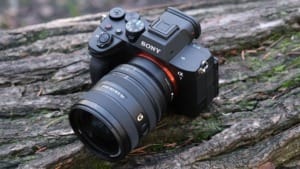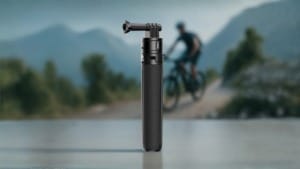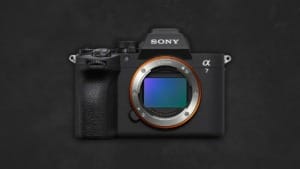DJI Osmo 360 review: Pushing 360° video to the next level
DJI Osmo 360 combines 8K video, strong low-light performance, and versatile modes in a compact, durable design for creators everywhere.

The DJI Osmo 360 marks the company’s first serious step into the panoramic action camera market, a segment previously dominated by rivals such as Insta360. By combining DJI’s engineering expertise with a fresh approach to sensor design, the Osmo 360 aims to deliver higher-quality 360° video while still retaining the versatility and ease of use that creators expect. It brings together 8K recording, a compact form factor, and extensive accessory support, positioning itself as a compelling option for vloggers, adventurers, and professionals alike.
Table Of Content
Content creation has become a global phenomenon, with platforms like TikTok, YouTube, and Instagram driving demand for lightweight yet powerful cameras. The Osmo 360 is designed to meet this need by offering sharp videos and also flexible shooting options, from immersive panoramic clips to wide-angle first-person action footage. Its ability to function both as a 360° camera and as a single-lens action camera sets it apart from many competitors.
DJI’s decision to enter this space feels strategic. The company has already earned recognition with its drones and Osmo Action series, but 360° content offers something distinct: the ability to capture everything in every direction simultaneously. That capability makes editing more dynamic and opens up creative storytelling possibilities, though it also comes with technical challenges such as stabilisation and stitching quality.
Compact design built for adventure
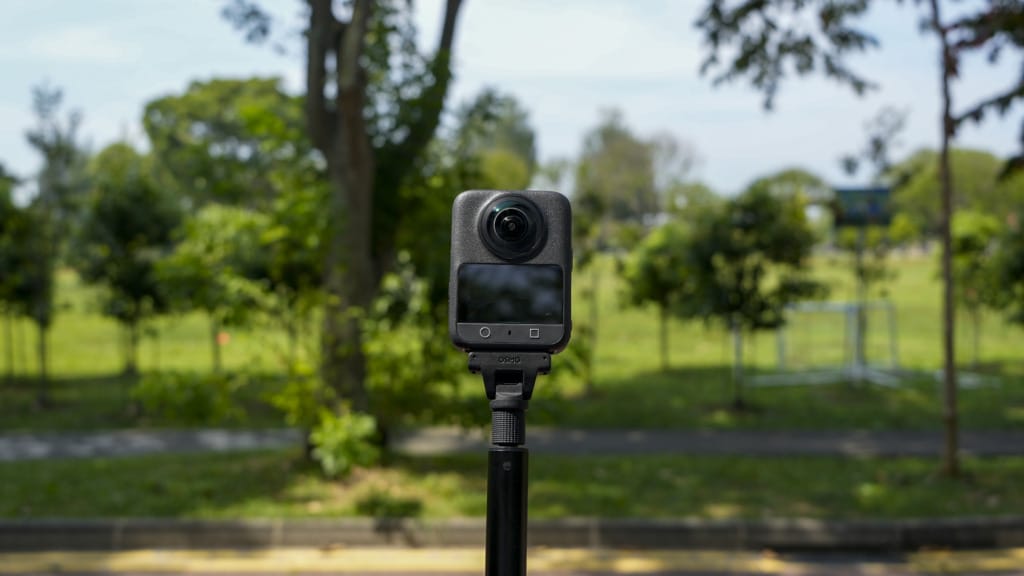
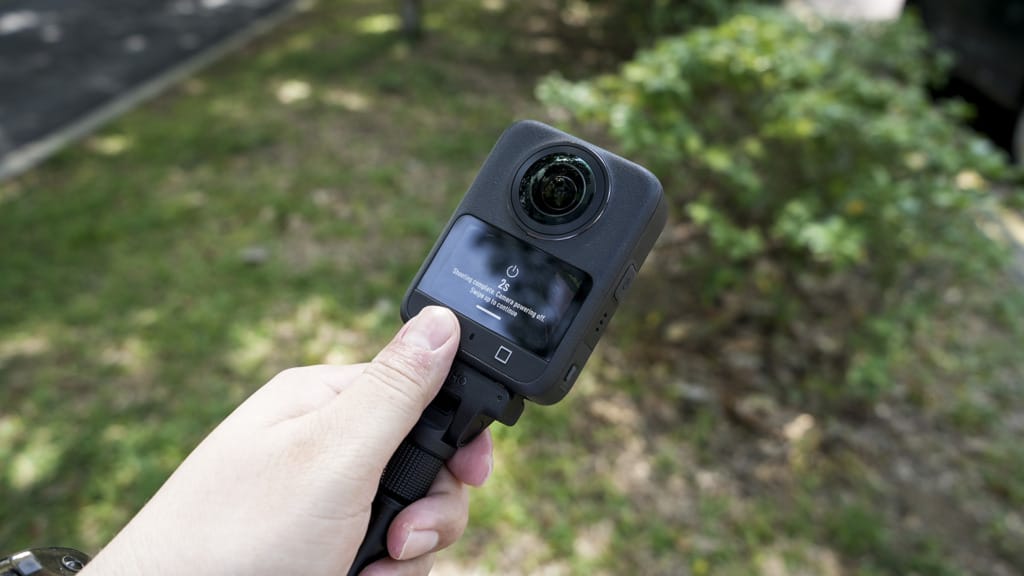
From the outset, the Osmo 360 feels like a carefully considered device. At just 183 grams, it is lighter than many rivals, making it easier to mount on helmets, handlebars, or even selfie sticks without causing fatigue. Its compact body measures significantly shorter than Insta360’s X5, a difference that can be felt when packing it for travel or attaching it to accessories. Despite its size, the camera does not compromise on durability, offering IP68 waterproofing up to 10 metres and cold resistance down to -20°C. For creators in Southeast Asia’s humid and unpredictable climate, this ruggedness is a clear advantage.
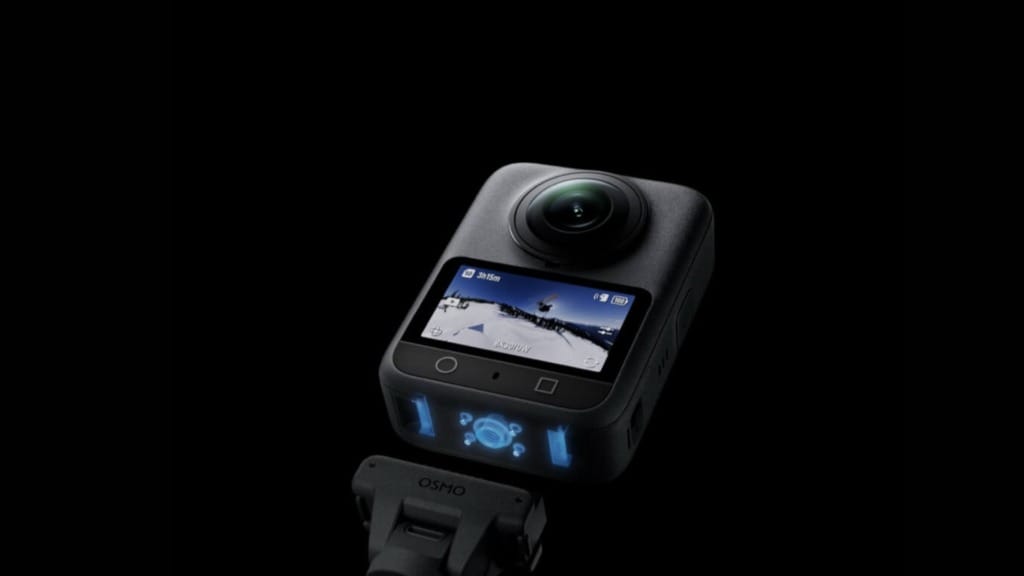

The design is both practical and sleek. A small but responsive touchscreen allows quick access to controls, while the side buttons and DJI Mimo app provide additional management options. The magnetic quick-release system is particularly convenient, letting users switch between mounts and accessories with minimal fuss. This system is also compatible with Osmo Action series accessories, allowing existing DJI users to seamlessly integrate the camera into their existing setup.
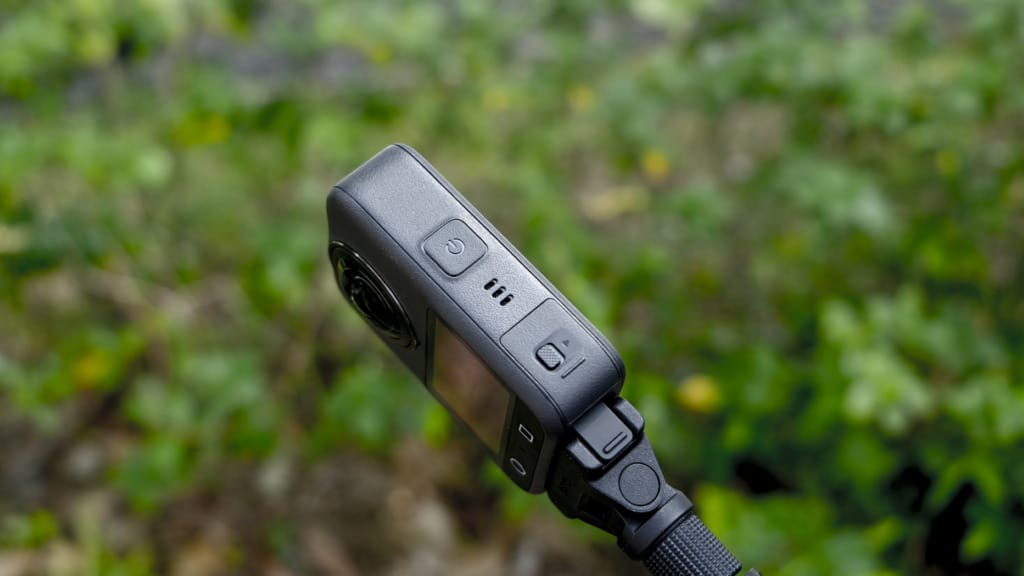
One notable difference from rivals is the built-in 105GB of storage. While microSD expansion is still available, having ample internal capacity means fewer worries about forgetting a card or running out of space during long shoots. Combined with support for high-speed data transfer, it ensures that creators can capture high-resolution clips without constant interruptions.
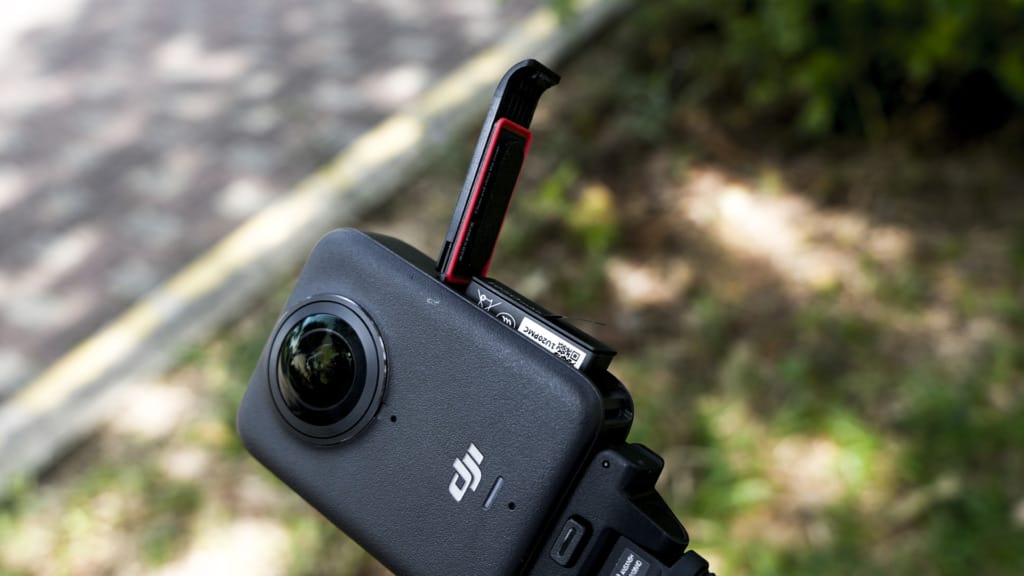
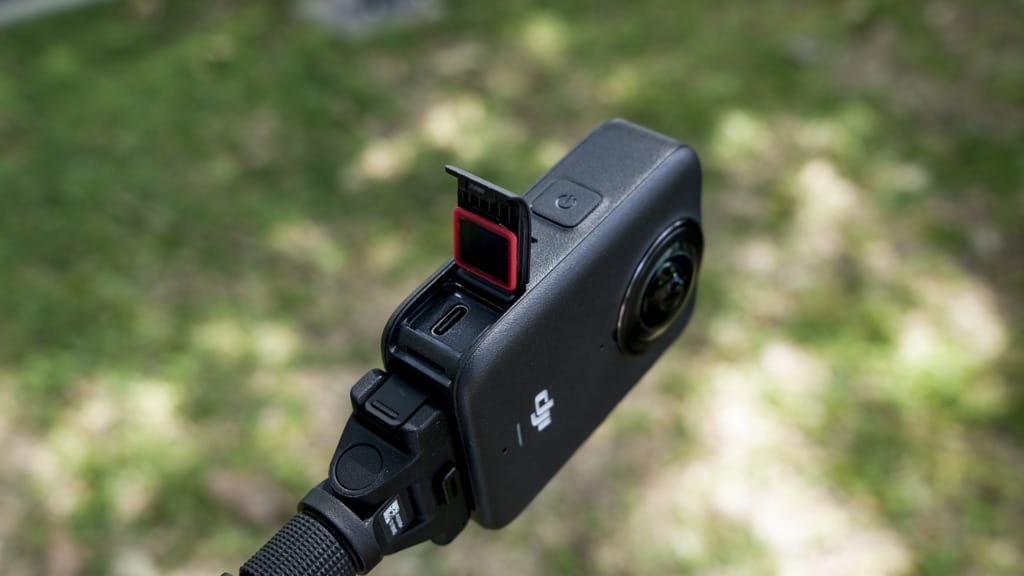
Battery life is also competitive. The camera can record approximately 100 minutes of 8K 30fps footage in standard use, or up to 120 minutes in endurance mode. With the optional battery extension rod, this can be extended to 180 minutes, providing enough power for most full-day shoots. The rod also doubles as a charging grip with integrated controls, making it a practical companion for extended sessions.
Imaging power with 8K clarity and low-light strength
The core of the Osmo 360 lies in its imaging system. DJI has opted for an innovative 1-inch square sensor, designed specifically for 360° capture. This shape enables the camera to utilise 25% more of the sensor area compared to traditional rectangular chips, thereby improving efficiency and enhancing image quality. In practice, this translates to cleaner footage with more detail retained across the frame.
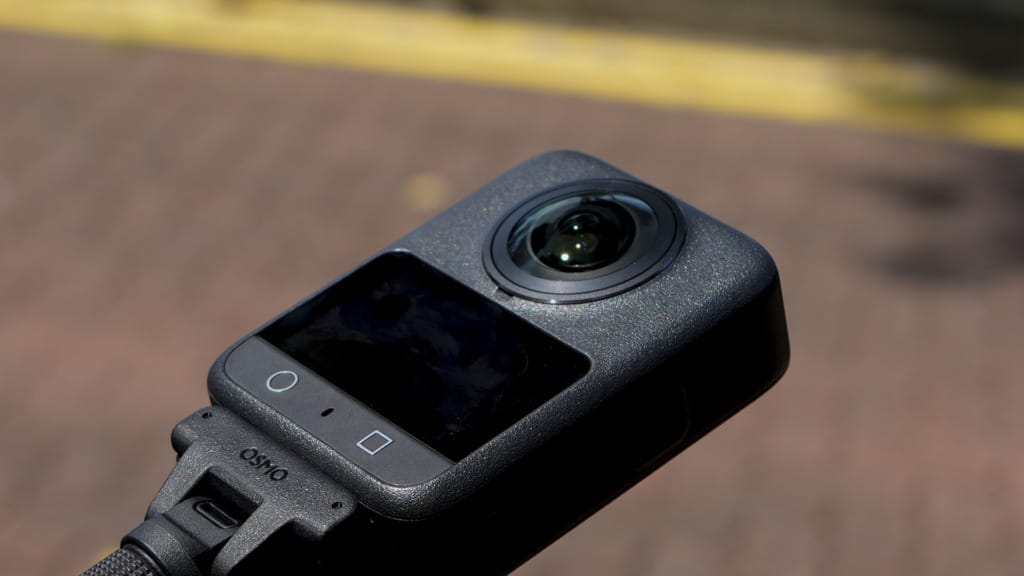
The camera supports native 8K 360° video at up to 50 frames per second, a specification that sets it apart from many competitors. The result is vibrant and sharp footage with excellent colour accuracy, particularly when recorded in 10-bit or D-Log M mode. This setting also provides up to 13.5 stops of dynamic range, allowing highlights and shadows to be preserved even in challenging lighting conditions. When testing during sunrise and night-time city scenes, details such as bright street lamps and dark alleyways were captured without significant clipping or noise.
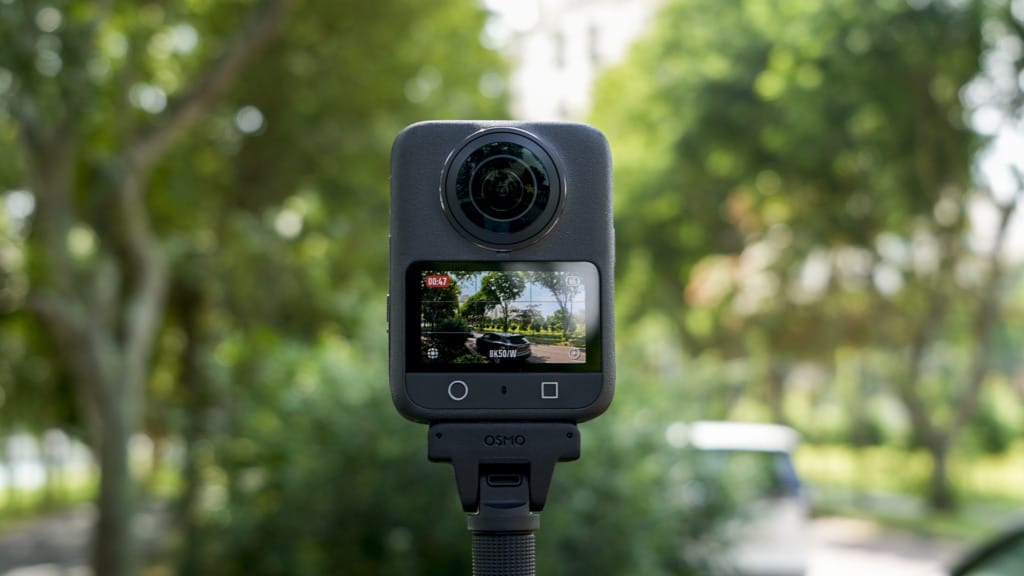
For users seeking smooth motion, the camera offers 4K 100fps 360° video, enabling up to 4x slow motion playback. In single-lens Boost Video mode, it takes it a step further with 4K at 120fps and a 170° field of view, ideal for capturing fast-paced sports or adventure footage. Stabilisation is handled through DJI’s HorizonSteady and RockSteady 3.0 systems. In testing, both modes performed effectively during cycling and jogging sessions, maintaining a steady footage level and minimising excessive shakes. However, as with most digital stabilisation systems, performance dipped in very low light, where motion blur created some distortion.


Photography is another highlight. The Osmo 360 captures still images at up to 120 megapixels, equivalent to 16K resolution. This allows for detailed immersive panoramas that can be explored in full or reframed into conventional photos. Even when zooming in, fine details such as street signs and facial expressions remain visible. For low-light photography, pixel binning effectively reduces noise, although the results still fall short of those achieved by dedicated cameras with larger sensors.
Flexible shooting modes for every scenario
Where the Osmo 360 distinguishes itself further is in versatility. It is not limited to 360° shooting but can switch into a single-lens ultra-wide action camera. In this mode, it records 5K 60fps video with a 155° field of view, making it suitable for vlogging and everyday use. Switching between front and rear lenses without stopping the recording is especially useful for creators who want to capture reactions while also showing their environment.
The invisible selfie stick effect remains a favourite feature. When paired with DJI’s accessory, the stick vanishes from the footage automatically, giving the impression of a floating camera operator. This is particularly effective when skating, cycling, or hiking, as it provides a dynamic third-person perspective. Selfie mode further enhances this by exporting wide-angle footage at high frame rates, offering slow-motion options up to 240fps.

Audio performance is equally strong. The OsmoAudio direct microphone connection allows up to two DJI wireless transmitters to connect directly, without the need for an external receiver. This makes it easier to record dialogue between two people while still capturing ambient sound through the built-in microphones. During outdoor tests, voices came through clearly, while environmental sounds such as waves and traffic added depth. Compared with rivals that only support a single microphone connection, DJI’s system feels more advanced.
Other usability features include gesture and voice controls, which make it simple to start or stop recording, even when wearing gloves or holding equipment. Editing support is also provided through DJI’s Mimo and Studio apps. While these tools are functional, they are not yet as polished as Insta360’s software, lacking some advanced features, such as transitions and text overlays. For basic trimming and reframing, however, they work well enough.
Real-world performance across different environments
In practice, the Osmo 360 adapts well to different shooting environments. On a coastal road cycling trip, the combination of 8K clarity and stabilisation produced footage that felt cinematic, capturing both the speed of the ride and the details of the surrounding landscape. Switching to 4K 120fps slow motion added a dramatic touch, highlighting every turn and descent with fluid motion.
Urban night shooting proved another strength. With its f/1.9 aperture and large pixels, the camera outperformed many rivals in low-light conditions. Neon signs and moving traffic were captured with relatively low noise, and the SuperNight mode helped retain colour accuracy. Stabilisation was less reliable under these conditions, but the results were still usable for social media content.
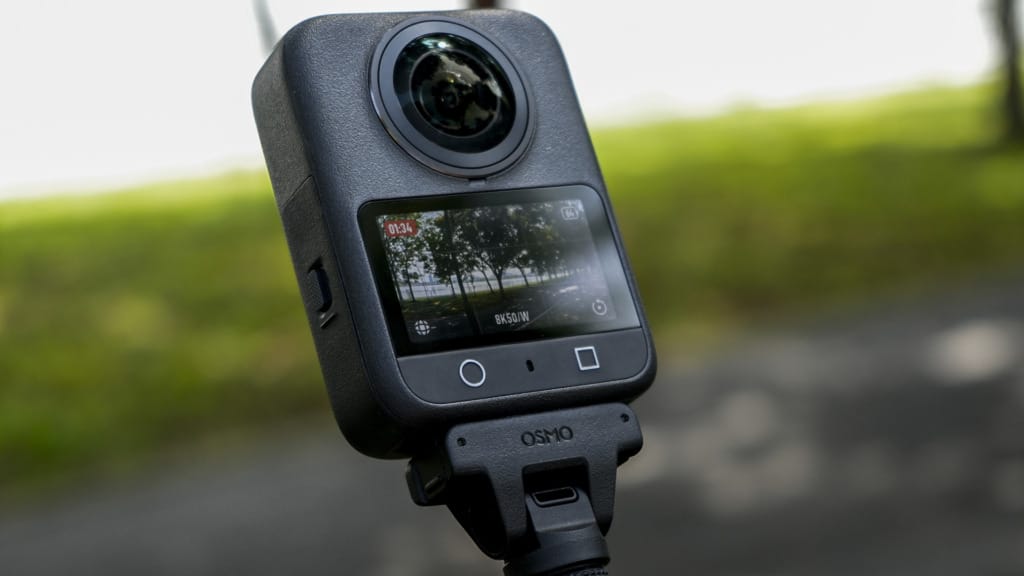
For vlogging, the ability to switch between lenses without interrupting recording was particularly useful.
Walking through crowded markets in Singapore, it was possible to capture both personal commentary and the bustling atmosphere in one continuous take. The built-in microphones worked well, although pairing with DJI’s wireless mics ensured even clearer audio, even in the presence of background noise.
Durability was also tested during a rainy hike, and the IP68 waterproofing provided confidence. Submersion tests up to a few metres showed no leakage, and the camera remained responsive even after prolonged exposure to water. For creators who frequently shoot in unpredictable weather or challenging environments, this resilience will be a crucial factor.
The verdict: DJI Osmo 360
The DJI Osmo 360 is a strong debut in the panoramic camera market, combining innovative design with powerful imaging capabilities. Its 1-inch square sensor, native 8K video, and strong low-light performance make it one of the most technically capable 360° cameras available today. Features such as dual microphone support, invisible selfie stick compatibility, and versatile shooting modes further enhance its appeal to creators seeking both creativity and convenience.
It is not without limitations. Like all 360° cameras, the de-warped footage lacks the sharpness of traditional action cams. Digital stabilisation struggles in very dark conditions, and DJI’s Studio editing software still has room for improvement compared to competitors. Yet these drawbacks are outweighed by the overall performance and flexibility offered.
For content creators, the Osmo 360 represents a practical and forward-looking tool. Its compact design, rugged build, and extended battery options make it well-suited to the region’s diverse shooting environments, from city streets to beaches and mountain trails. More importantly, it lowers the barrier for creators who want to experiment with immersive video without sacrificing usability.
In a market where Insta360 has long set the pace, DJI has delivered a product that not only catches up but, in some areas, pushes ahead. The Osmo 360 is not just another action camera—it is a device that encourages new ways of storytelling. For anyone serious about 360° content, this camera deserves serious consideration.











